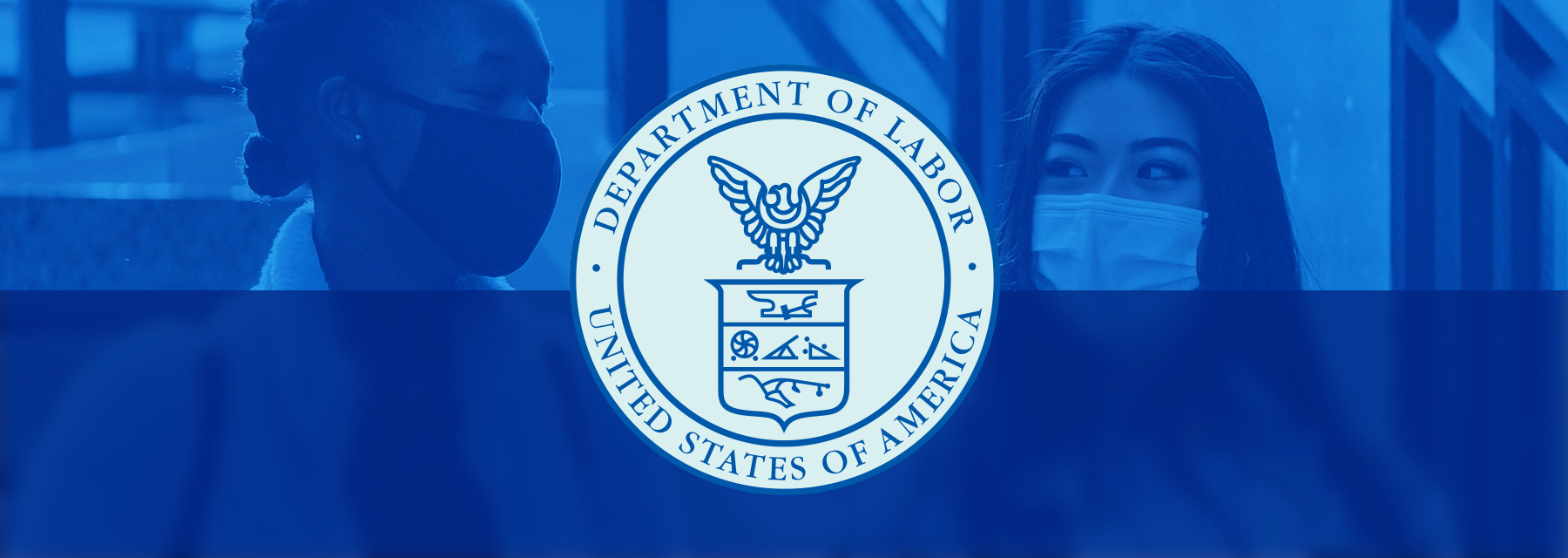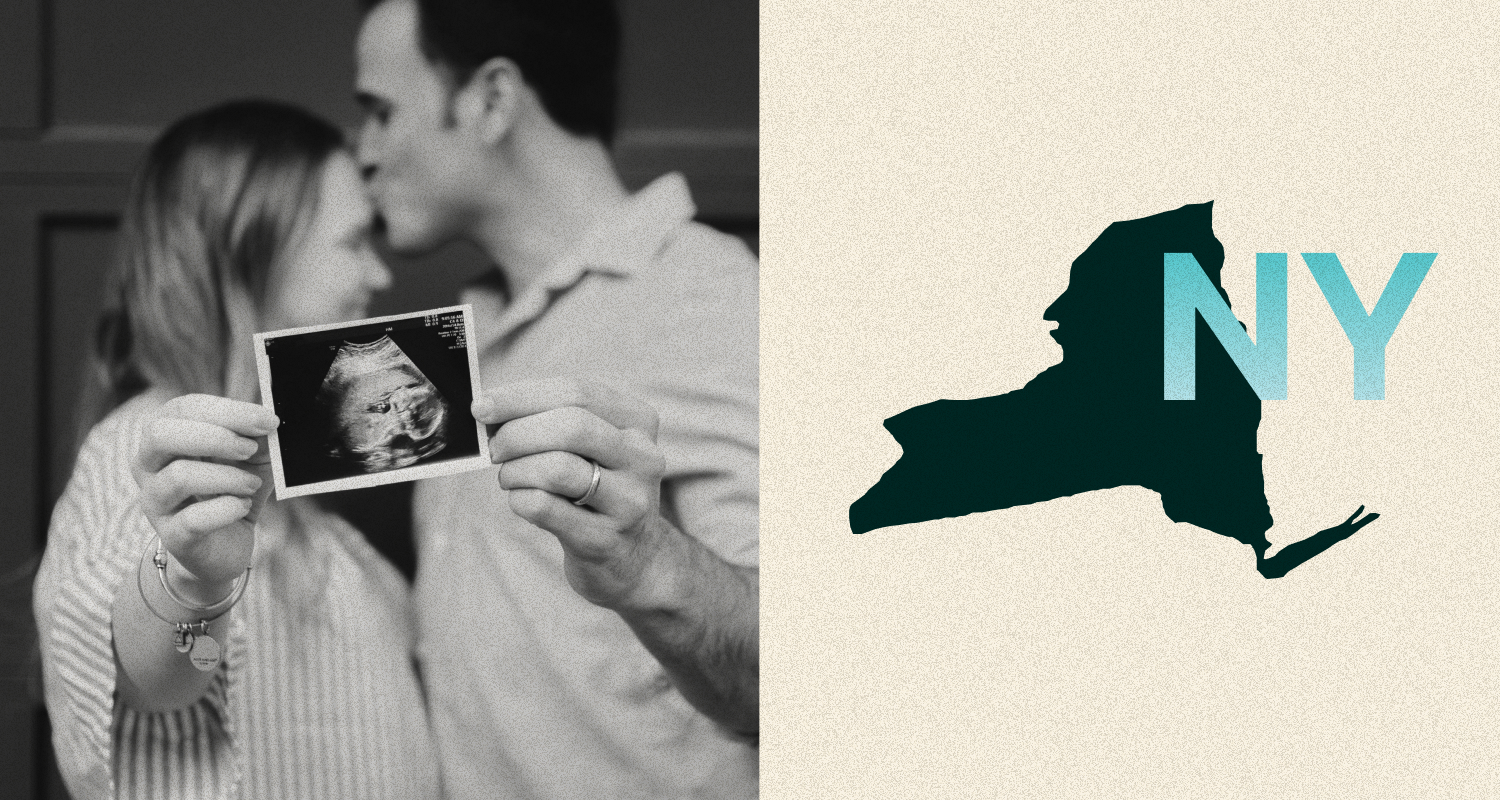As discussed in our prior post, Congress recently passed the American Rescue Plan Act (ARPA), which provides free COBRA coverage from April 1, 2021 through September 30, 2021 to “Assistance Eligible Individuals” (AEIs) who lost (or lose) healthcare coverage due to a reduction in hours or involuntary termination.
On April 7, 2021, the Department of Labor (DOL) released much anticipated model notices and FAQs for the APRA COBRA subsidies. Employers can use the model notices to comply with the new ARPA notice requirements (outlined below). Employers subject to federal COBRA should take immediate action, as the notices must be sent by certain deadlines and employers may be subject to penalties for failure to do so.
Employers should note that the DOL FAQs primarily address worker questions and do not address many of the lingering employer-related issues. Nonetheless, the DOL FAQs and model notices do provide clarifications on the following:
- By May 31, 2021, employers are required provide the Notice in Connection with Extended Election Periods (with the Summary of COBRA provisions) to all AEIs who experienced a reduction in hours or involuntary termination going back to October 2019, including current COBRA participants and individuals eligible to elect COBRA coverage during the Special 60-Day Election Period.
- Employers must provide COBRA qualified beneficiaries who experience a reduction in hours or involuntary termination from April 1, 2021 through September 30, 2021 with a General ARPA Notice (with the Summary of COBRA provisions).
- AEIs must apply for a COBRA subsidy by completing a subsidy request form (located in the Summary of COBRA provisions) and returning it to the employer (or their COBRA administrator/vendor). AEIs must submit the request within 60 days of receiving their election notice.
- A reduction in hours does not need to be involuntary for AEIs to be eligible for the COBRA subsidy (whereas terminations must be determined involuntary).
- The special COVID deadline extensions do not apply to an employers’ deadline to provide applicable ARPA COBRA notices, nor do they apply to AEIs’ deadline to elect subsidized COBRA coverage. These notices and elections must comply with the deadlines required under ARPA (these deadline extensions are explained in further detail below).
- AEIs whose qualifying event occurred prior to April 1, 2021 and who elect COBRA coverage during the Special 60-Day Election Period can begin coverage prospectively from the date of their election, or alternatively, can choose to start their coverage as of April 1, 2021. In addition, if a COVID deadline extension applies, AEIs can elect coverage back to the date of the COBRA qualifying event (though AEIs will be required to pay retroactive premiums and the subsidy will only apply from April 1, 2021 through September 30, 2021).
- When AEIs’ COBRA subsidy ends, they may be eligible for a special enrollment period to enroll into individual coverage through the Marketplace.
Below we review new and additional clarifying information provided in the DOL FAQ and notices. For a detailed break-down on the COBRA subsidies, see our prior blog.
Eligibility
What types of coverage are eligible for the COBRA subsidy?
ARPA provides a subsidy for COBRA premiums for employer-sponsored group health plans subject to federal COBRA (except health flexible spending arrangements (FSAs)), plans sponsored by State or local governments subject to the Public Health Service Act, and group health insurance coverage subject to state mini-COBRA laws from April 1, 2021 through September 30, 2021.
Which individuals are eligible for COBRA subsidies?
COBRA subsidies are available for Assistance Eligible Individuals (AEIs). AEIs are COBRA qualified beneficiaries (e.g., employees/former employees and their spouse/dependents who were covered immediately before the COBRA qualifying event) who:
- Are eligible for federal COBRA (or state mini-COBRA) coverage due to a reduction in hours (discussed below) or involuntary termination of employment (other than for gross misconduct);
- Elects (or is enrolled in) COBRA coverage from April 1, 2021 through September 30, 2021;
- Are not eligible for Medicare or other group health plan coverage; and
- Are still within their maximum COBRA coverage period (generally, 18 months for federal COBRA).
Individuals who currently have individual coverage through the Marketplace or Medicaid may be eligible for a COBRA subsidy. However, individuals who elect to enroll in COBRA with a subsidy will no longer be eligible for a premium tax credit or health insurance tax credit during the ARPA COBRA subsidy period.
What is a “reduction in hours” that would qualify for a COBRA subsidy?
The DOL provides a non-exhaustive list of examples of a “reduction in hours” that would qualify an individual for the COBRA subsidy, including a reduction in hours due to:
- A change in a business’ hours or operation;
- A change from full-time to part-time status;
- Taking a temporary leave of absence;
- An individual’s participation in a lawful strike.
Individuals must remain an employee at the time hours are reduced, including during any leave of absence, to qualify for the subsidy.
Which individuals are not eligible for COBRA subsidies?
Individuals are not eligible if they are eligible for Medicare or other group health coverage, such as through a new employer’s plan or a spouse’s plan (not including excepted benefits, a qualified small employer health reimbursement arrangement (QSEHRA), or a health FSA). Individuals must certify that they are not eligible for the above coverage on the form that must be submitted to request the subsidy (discussed below). In addition, individuals must notify the plan if they become eligible for such coverage and may be subject to a penalty if they fail to do so.
Application for the COBRA Subsidy
Are AEIs required to apply for the subsidy?
Yes. To apply for the COBRA subsidy, AEIs must complete a subsidy request form (which is entitled “Request for Treatment as an AEI” and is located in the Summary of the COBRA Subsidy Provisions under ARPA) and return it to their plan or employer. Employers should provide the request form to AEIs with their election notice (discussed below).
For AEIs not enrolled in COBRA, the request form can be sent along with their election form. For AEIs currently enrolled in COBRA, the request form can be sent separately. AEIs must return the request form within 60 days of receipt of the applicable notice, or they may forfeit their entitlement to the subsidy.
What information must AEIs provide to apply for the COBRA subsidy?
The subsidy request form requires individuals to enter their personal information (name, mailing address, phone number, and email address), indicate that they (and their dependents, if applicable) are eligible for the subsidy, and sign their name, date and relationship to the employee. To indicate eligibility, individuals (and dependents) must mark “yes” to the following statements:
- The qualifying event was a reduction in hours or involuntary termination;
- They elected (or are electing) COBRA coverage;
- They are not eligible for other group health plan coverage (or they were not eligible for other group health plan coverage during the period for which they are claiming the subsidy); and
- They are not eligible for Medicare (or they were not eligible for Medicare during the period for which they are claiming the subsidy).
Can AEIs change coverage options?
Employers have the option to allow AEIs to switch to an equal or cheaper plan if that coverage is available to similarly situated active employees. If employers allow AEIs to switch plans, they must notify them of their option to switch plans. AEIs have 90 days from when they are notified of this option to change their plans.
Do the COVID Deadline Extensions apply to the COBRA subsidy?
No. In April 2020, the DOL provided COVID extensions for certain deadlines, including employees’ 60-day deadline to elect COBRA coverage. The COVID deadline extensions do not apply to the deadline to apply for ARPA COBRA subsidies. Therefore, AEIs must elect COBRA coverage within 60-day of receiving their election notice or forfeit their right to elect COBRA coverage with a subsidy.
Do AEIs directly receive a COBRA subsidy?
No, AEIs do not directly receive a COBRA subsidy. Instead, they will not be required to pay for COBRA premiums from April 1, 2021 through September 30, 2021, provided they provide a subsidy request form to their plan sponsor or employer.
Employers (and in some cases the plan or carrier) will advance the premiums on behalf of the AEI and will receive a reimbursement for those amounts in the form of payroll tax credits.
Effective Date and Duration of the COBRA Subsidy
When does COBRA coverage start?
AEIs must elect coverage within 60 days of receiving their notice and can begin coverage prospectively from the date of their election, or if the qualifying event occurred prior to April 1st, AEIs could choose to start coverage as of April 1, 2021 (even if the individual makes the election after April 1st).
AEIs who are entitled to the COVID deadline extension can elect COBRA coverage retroactive to the date of their qualifying event, though they would have to pay retroactive premiums back to that date (the COBRA subsidy would only apply from April 1, 2020 through September 30, 2021).
Can individuals enroll onto the Marketplace after their COBRA subsidy ends?
Individuals enrolled in individual market coverage (including through the Marketplace) may drop coverage to enroll in subsidized COBRA coverage. The DOL states that individuals may be eligible for a special enrollment period to enroll in coverage through the Marketplace after the COBRA subsidy ends. In addition, the Marketplace provides a special enrollment period when an individual exhausts their maximum COBRA coverage.
New COBRA Notice Requirements
What are the new notice requirements?
Employers (or insurers or plans, in certain cases) are required to notify qualified beneficiaries regarding the COBRA subsidy and their rights under ARPA. The following new notice requirements and the associated model notices are outlined below:
- Model Notice: COBRA Continuation Notice in Connection with Extended Election Periods
- Content: The notice describes the availability of the COBRA subsidy and Special 60-day Election Period.
- Required Recipients: AEIs who had a reduction in hours or involuntary termination prior to April 1, 2021, and who are still within their COBRA maximum coverage period as of April 1, 2021 (generally, those who experienced a reduction in hours or involuntary termination dated back to October 2019). This includes AEIs who are currently enrolled in COBRA and those who are eligible to enroll in COBRA during the Special 60-Day Election Period.
- Deadline to Send: May 31, 2021
- How to Send: Should be sent with the Summary of the COBRA Subsidy Provisions (which contains the subsidy request form)
- Model Notice: ARPA General Notice and COBRA Continuation Coverage Election Notice
- Content: The notice must describe the availability of the ARPA COBRA subsidy (along with specific content requirements). The notice requirement may be satisfied by using the model notice (linked above), by amending existing notices, or providing a separate attachment with the standard COBRA election notice.
- Required Recipients: All COBRA qualified beneficiaries who experience a reduction in hours or involuntary termination from April 1, 2021 through September 30, 2021. For administrative ease, employers may want to provide this notice to all COBRA qualified beneficiaries who experience any qualifying event from April 1, 2021 through September 30, 2021. Employers should work with their COBRA vendor to determine what approach to take.
- Deadline: Within 44 days of the reduction in hours or involuntary termination.
- How to Send: Should be sent with the Summary of the COBRA Subsidy Provisions (which contains the subsidy request form)
- Model Notice: Summary of the COBRA Subsidy Provisions under APRA
- Content: This Summary contains important information on the eligibility for the COBRA subsidy, the subsidy request form (entitled the “Request for Treatment as an AEI”) and includes a form that participants can use to notify the plan that they have become eligible for Medicare or another group health plan.
- Required Recipients / How to Send: This Summary should be sent to all AEIs along with the Notice of Extended Election Period and the ARPA General Notice.
- Model Notice: Notice of Expiration of COBRA Subsidy
- Content: The notice informs individuals about the expiration of their subsidy, the date of expiration, and that the individual may be eligible for coverage without the subsidy through COBRA or another group health plan.
- Required Recipients: AEIs whose subsidy is going to expire (unless the expiration is due to the individual becoming eligible for coverage under another group health plan).
- Deadline: 15-45 days before the individual’s subsidy expires (either September 30, 2021, or earlier if the individual’s maximum COBRA coverage period runs out).
Important Note: Employers and/or their COBRA vendor must modify the model notices with the appropriate plan information before distributing the notice to individuals.
Penalties
What are the penalties for failing to provide the required COBRA notices or coverage?
Employers that do not satisfy COBRA continuation requirements may be investigated by the DOL and may be subject to excise taxes of up to $100 per qualifying beneficiary (but no more than $200 per family) per each day of non-compliance.
Employer Questions Still Remaining
The DOL guidance is mostly geared toward AEIs and many questions for employers are still not addressed. The following questions remain and will hopefully be addressed in later guidance:
- What qualifies as an “involuntary termination;”
- How the subsidy applies where an individual experiences a second COBRA qualifying event that extends their maximum COBRA coverage;
- Guidance for professional employer organizations (PEOs);
- Instructions on how employers apply for the tax credits and how employers can receive an advance of the credits;
- Guidance for employers who underwent a merger or acquisition; and
- How existing agreements for employer-provided COBRA subsidies in severance packages interact with the ARPA subsidies.
Employer Action
Now that the DOL model notices have been released, employers can work with their COBRA administrators to timely provide the ARPA notices. Employers must review the following:
- Optional: If employers intend to allow AEIs to change their coverage option, they should check with the carrier (if fully insured) or stop loss provider (if self-insured) to ensure changes will be permitted. Employers should also coordinate with their COBRA administrator to notify individuals of their ability to switch plans, the plans available, and the deadline to make the change.
- Identify AEIs who were eligible for COBRA coverage due to a reduction in hours or involuntary termination going back to October 2019. Work with your COBRA administrator to provide the Notice of Extended Election Period (with the Summary of COBRA provisions) to these AEIs by May 31, 2021.
- Work with your COBRA administrator to provide the ARPA General Notice (with the Summary of COBRA provisions) to employees and qualified beneficiaries who experience a COBRA qualified event from April 1, 2021 through September 30, 2021.
- Work with your COBRA vendor to send the Notice of Expiration of COBRA Subsidy to individuals 15-45 days before their subsidy expires.
- Work with your COBRA vendor to identify AEIs who returned subsidy request forms, review eligibility as necessary, and carefully track the COBRA premiums provided.
Additional Resources
- Sequoia Foreword: 100% COBRA Subsidies Included in the Latest COVID Stimulus Bill
- Sequoia Foreword: IRS Issues Mid-Year Election Change Relief & Clarifying Guidance on FSA/DC FSA Changes
- DOL FAQs on ARPA COBRA Subsidies
- DOL Model Notices
Disclaimer: This content is intended for informational purposes only and should not be construed as legal, medical or tax advice. It provides general information and is not intended to encompass all compliance and legal obligations that may be applicable. This information and any questions as to your specific circumstances should be reviewed with your respective legal counsel and/or tax advisor as we do not provide legal or tax advice. Please note that this information may be subject to change based on legislative changes. © 2021 Sequoia Benefits & Insurance Services, LLC. All Rights Reserved




